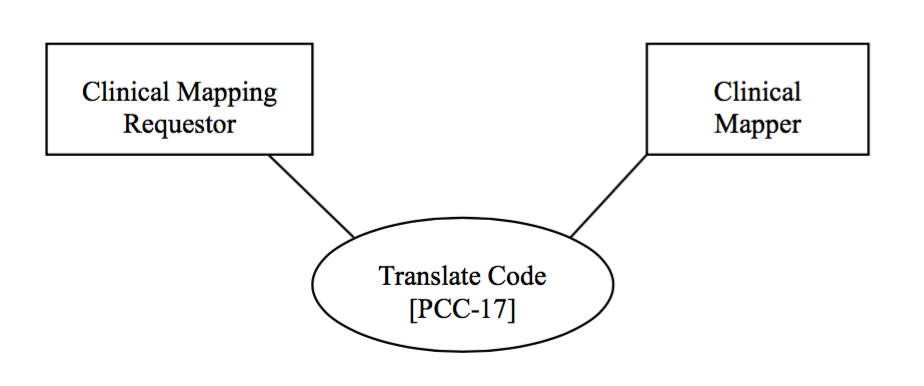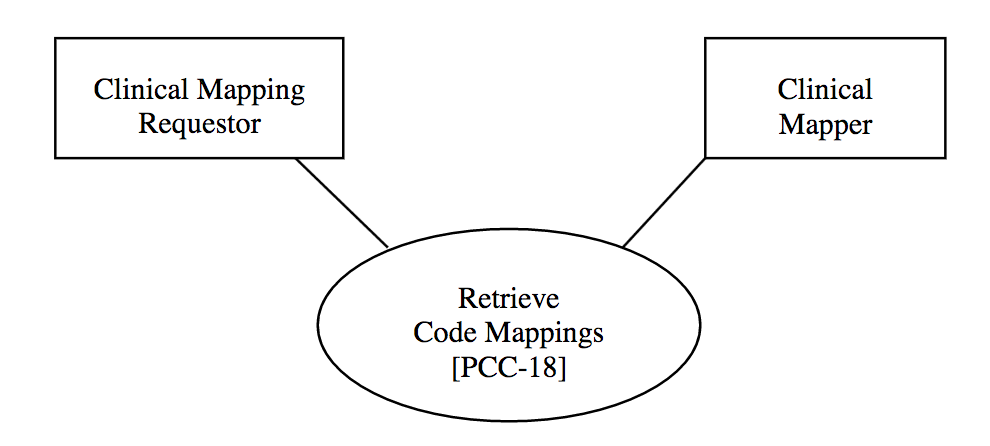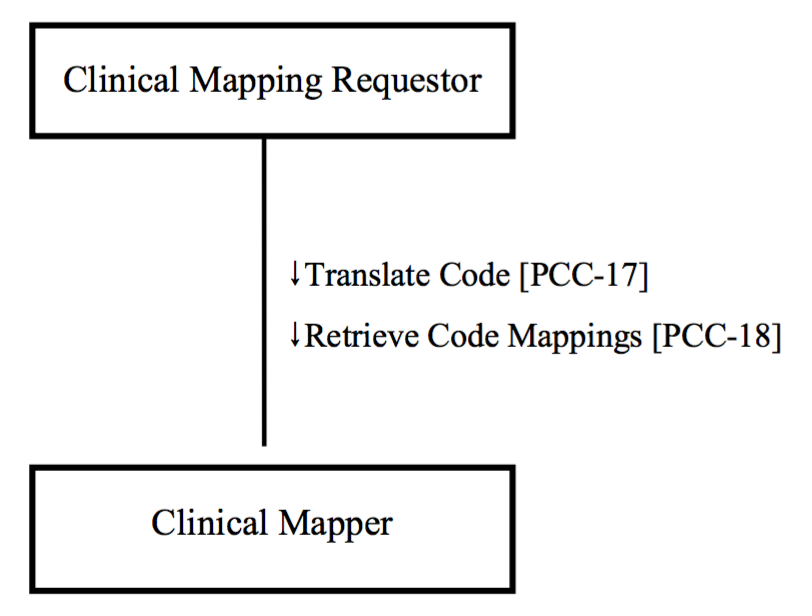Difference between revisions of "Clinical Mapping"
| Line 66: | Line 66: | ||
This page is based on the [[Profile Overview Template]] | This page is based on the [[Profile Overview Template]] | ||
| − | [[Category: | + | [[Category:Profiles]][[Category:Patient Care Coordination]][[Category: FHIR]] |
Revision as of 14:06, 25 August 2017
Clinical Mapping Profile supports the need of systems to translate codes from one terminology to another to support exchange of information between different systems.
Summary
Translations supported in the Clinical Mapping Profile are often needed at workflow boundaries where concepts used in one workflow have different names than those in another workflow. For example, in reporting device information to an EMR system, the device vendor may wish to capture device measurements of vital signs using internationally recognized terminologies provided by those devices, but the EMR may need to report these measurements using different terminologies to support local requirements. Another example would be for cases where data captured to support clinical activity for diagnosis or treatment must then be used to facilitate charge capture processes.
There are two ways that mappings can be done. The system doing the mapping can obtain the information on how to map individual terms as needed (e.g., through a query to a terminology mapper), or it can obtain data describing how the mapping should be done for all terms at a single point in time (e.g., startup). The former capability supports all terminology mapping needs, but may have a performance penalty when a large number of mappings need to be performed. The latter capability works in cases where the number of terms to be mapped is small, and the rules by which the mapping is performed are well defined.
Benefits
- Significant time savings
- Data entry error reduction
- Consistency in practice to permit comparison and aggregation of data post-conversion
Details
A crosswalk is a mapping from one coding system to another in which concepts from the source coding system are mapped to concepts in the target code system. The simplest form of crosswalk is a lookup table. This form is often used to translate from local codes to codes from standard terminologies. Guidance on the concepts of input context and output context are provided in this profile that deal with factors affecting both the inbound and outbound sides of code translations. Additionally, CMAP supports access to individual transactions providing the opportunity for implementers to leverage features such as cacheing and refreshing of terminology maps that are provided by external services.
Systems Affected
- Personal Health Monitoring Devices
- EMRs and Other Health IT Systems
- Billing Systems
Actors & Transactions:
- Clinical Mapping Requestor
- Clinical Mapper
Specification
Profile Status: Trial Implementation
Documents:
Underlying Standards:
See Also
Related Profiles
This profile may be used with a Device Observation Consumer Actor from the IHE PCD Device Enterprise Communication (DEC) Profile. It enables the Device Observation Consumer Actor to translate specific IEEE observation codes contained in the HL7® v2.6 message produced by the PCD-01: Communicate Device Data transaction into clinically usable LOINC.
Consumer Information
The Profile FAQ Template answers typical questions about what the Profile does. <Replace the link with a link to the actual FAQ page for the Profile>
The Profile Purchasing Template describes considerations when purchasing equipment to deploy this Profile. <Replace the link with a link to the actual Purchasing page for the Profile>
Implementer Information
The Profile Implementation Template provides additional information about implementing this Profile in software. <Replace the link with a link to the actual Implementation page for the Profile>
Reference Articles
<List References (good and bad) (with link if possible) to Journal Articles that mention IHE's work (and hopefully include some analysis). Go ahead, Google: IHE <Profile Name> abstract or Google: IHE <Profile Name> and under the "more" select "Scholar". You might be surprised. >
This page is based on the Profile Overview Template


